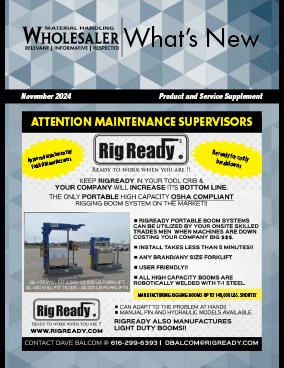In high-volume yard operations, safety isn’t just a priority. It’s a critical responsibility. The yard is a dynamic environment where people, trucks, and equipment intersect, and without a robust safety framework, the risk of incidents can escalate quickly. But how can enterprise shippers move beyond reactive safety measures to a more proactive, data-driven approach?
Why Data-Driven Safety Matters
Data-driven safety strategies are transforming yard operations. According to the National Safety Council, workplace incidents cost employers $171 billion annually, including $44.8 billion in direct costs from transportation-related injuries. Shippers can identify potential risks by leveraging real-time data, historical trends, and predictive analytics before they lead to incidents. The impact is substantial: reduced accidents, minimized downtime, and improved operational efficiency.
A data-driven safety strategy is about creating a culture of accountability where every team member understands how their actions impact overall safety. Data doesn’t just highlight risks, it empowers companies to address them and educate the workforce on safe practices proactively.
- Real-Time Monitoring and Alert
Sensors, cameras, and connected devices provide real-time visibility into yard activities. From monitoring truck movements to detecting unauthorized personnel in restricted areas, data-driven systems can alert operators to potential hazards before they escalate.
For example, with the proper technology, you can monitor speed limits, identify congested zones, and flag unsafe driving behaviors in real time. According to OSHA, implementing real-time monitoring systems can reduce workplace injuries by up to 30% annually.
Companies need to integrate technology to track metrics and coach drivers in the moment. This will turn data into actionable insights that protect people and assets.
- Predictive Analytics for Incident Prevention
Historical incident data can be analyzed to identify patterns and predict future risks. Companies can proactively address high-risk areas and implement preventive measures by analyzing data from yard equipment, vehicle telematics, and driver behavior.
For instance, if data reveals that certain times of day or specific yard zones experience higher accident rates, management can adjust staffing levels, schedule additional safety checks, or deploy additional resources during peak risk periods. According to a study by the American Trucking Associations, predictive analytics can reduce accident frequency by up to 22% in logistics operations.
Every incident is an opportunity to learn. Analyzing near-misses and minor incidents gives companies the chance to refine their safety protocols and prevent more serious accidents.
- Safety Scorecards and KPIs
A data-driven approach also involves setting clear safety KPIs and tracking performance against benchmarks. These scorecards can include metrics such as:
- Incident frequency and severity rates
- Near-miss reporting rates
- Compliance with safety protocols
- Equipment maintenance schedules
- Driver training completion rates
Tracking these KPIs enables management to pinpoint areas where safety performance is lagging and take corrective action promptly. According to the Bureau of Labor Statistics, companies that actively monitor and address safety KPIs see a 48% reduction in workplace injuries.
4. Integrating Technology for Comprehensive Visibility
Technology integration is essential for a comprehensive safety strategy. Shippers can create a 360° view of yard operations from a safety perspective by combining data from yard management systems, telematics, and AI-powered cameras. This integrated view provides critical insights into potential hazards and allows for more accurate risk assessments.
5. Continuous Improvement Through Data
Data-driven safety isn’t a one-time initiative; it’s a continuous process. Regular data reviews and safety audits can help companies identify emerging risks and adapt safety protocols accordingly. This iterative approach ensures that safety strategies remain effective as yard conditions and operational demands evolve.
Safety isn’t just a checklist. It’s a continuous journey. A company’s goal should be to foster a culture where data empowers every team member to contribute to safer, more efficient yard operations.
Turning Data into Action
The stakes are high in enterprise yard operations. Safety isn’t just about avoiding accidents. It’s about building a culture of accountability and operational excellence.
A data-driven approach to safety minimizes risks and fosters a proactive, preventive culture that protects workers and assets and avoids disruptions in your supply chain.
About the Author:
Sarah Quick is a seasoned logistics professional with over 20 years of experience in transportation and supply chain management. As the Head of Fleet Transformation and Safety at YMX Logistics since August 2024, she leads initiatives in fleet optimization, safety programs, and the integration of emerging technologies, including electric vehicle adoption. Prior to joining YMX, Sarah spent Day & Ross, Embark Trucks, Hyperloop One, and the Transportation Technology Center, focusing on safety, compliance, and operations. Her career began in Australia’s rail industry, providing her with a comprehensive understanding of global transportation networks. Sarah is committed to enhancing safety standards, promoting sustainable practices, and advocating for the professional growth of women in logistics.
Sarah Quick holds a Bachelor of Science degree from La Trobe University and a Master’s degree from Swinburne University of Technology, both in Australia.











